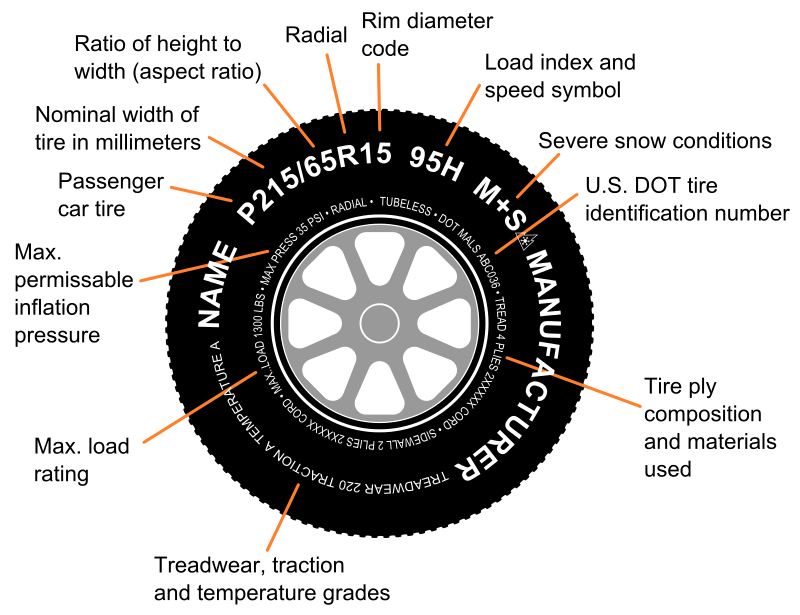One of the more important things in your car, travel trailer or 5th wheel is your tires. After all, the entire weight falls on them, and knowing if they are good enough is extremely important so you can be safe on the road. One of the main things you need to check is the date code on tires so you can determine the age.
Even if you get new tires for your RV, the age of the tire is important because it’s possible that the tires were sitting in a warehouse somewhere for quite some time. Getting older tires might cause an RV accident which is something that nobody wants. Although it’s highly unlikely that something like that happens, it’s better to know how to read the date code on tires so you know what you’re purchasing.
Every tire has a specific code on it that shows the age of the tire. All tires manufactured after the year 2000 have a letter DOT code and the last part of the DOT code have some numbers. These numbers are known as the digits of the DOT and this is the actual manufacture date of the tire. There are four numbers in total on this part of the date code. The first two numbers are indicators of the week of the year the tire was built while the second two numbers indicate the year in which it was made. By locating this DOT number on your tire you can easily determine the age of your tire.
While there is not a dedicated side on the tire where the DOT code has to be, the tire manufacturers are obligated by the department of transportation to put it on the tire. The place where it’s most often located on tires is the inner sidewall of the tire. This is not a rule so if it is not on the inner sidewall you might need to turn the tire around to find the number but it has to be there.
The DOT code doesn’t just have the date codes on tires but it also has other information. After the DOT part of the code, you have the plant code of the tire followed by the tire size. After those two there are a few more markings which indicate some characteristics of the brand and only after that are the numbers for the tire age.
After the DOT part of the code, you have the plant code of the tire followed by the tire size. After those two there are a few more markings which indicate some characteristics of the brand and only after that are the numbers for the tire age.
Essentially, the agreed length of the life of a tire is somewhere between six and ten years. It would depend on many factors such as what materials the tire is made of but to be on the safe side of things it’s generally not wise to get tires that are older than 10 years. Even if they are not worn out it is not a good option to get tires that were stored somewhere for more than 10 years.
Depending on how much you travel and how well you take care of your tires, your tires can last a long time. However, it’s good to change them every 4 years on average. According to the law, if your tires get worn out and the depth of the tread is lower than 1.6mm you have to replace the tires. The recommended length at which you should replace your summer tires is 3mm and your winter tires at 4mm.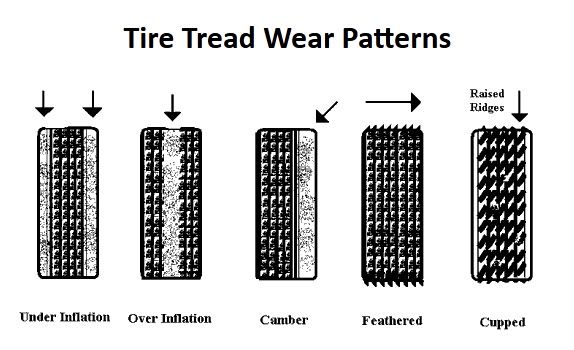 These changes will ensure your safety on the road and make sure that you don’t get into an accident because of improper or worn-out tires.
These changes will ensure your safety on the road and make sure that you don’t get into an accident because of improper or worn-out tires.
Knowing how to determine when a tire was produced will certainly save you some money and increase your safety on the road. Although not many tires reach their 10th birthday and become unsafe some do which is where this little information will prove to be very useful. If you are unsure about your tires or you are about to buy tires that might be older, locate the date code on tires which is usually on the inner sidewall and check the last four digits. They will reveal the week and the year the tire was made by the manufacturer and afterward, you can calculate if the tire is too old or not.
We hope that this article on how to read the date code on tires and how to determine the age of your tires will help you make an informed decision when you are wondering if your tires need to be replaced.
What is the proper tire inflation?
Maintain air pressure at the maximum PSI recommended on the tire sidewall. It's best to check tire pressure with a quality tire gauge when tires are cold and in the shade.
It's best to check tire pressure with a quality tire gauge when tires are cold and in the shade.
Under inflation is the number one cause of trailer tire failure. An underinflated tire creates abnormal tire flexing and excessive heat causing:
- Ride and handling problems
- Decreased fuel efficiency
- Reduction of tire life
Driving on tires with too much air is also not recommended. Over-inflated tires are more likely to cut, puncture or fail by sudden impact.
How do I determine the age of my trailer tires?
Every tire has a date code stamped on the sidewall, which is the date the tire was manufactured. The date code is usually at the end of the DOT I.D. and is a 4 digit number. The first two numbers indicate the week (out of 52) and the last two digits indicate the year. For example, 3409 means the tire was manufactured the 34th week of 2009.
Please keep in mind that remaining tread is not an indicator of tire life as the irregular duty cycle requires that trailer tires sit in extended storage under static load conditions often for long periods without movement or maintenance causing the tire carcass (internal structure) to break down, a condition undetected by visual inspection.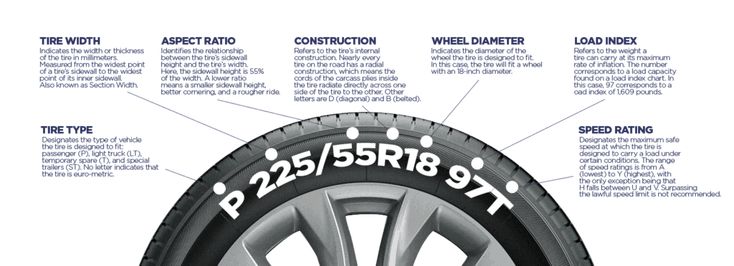
What does “ST” mean?
Trailer tires are designated “ST” for “Special Trailer” tires. Trailer tire requirements differ greatly from automotive or light truck tires. Automotive tires are designated “P” for Passenger or “LT” for Light Truck and are not designed for trailer use. Passenger or truck tires, with their more flexible sidewalls, can result in trailer sway problems. The stiffer, heavy duty sidewalls of ST tires are designed to control and reduce sway problems. The construction, design, materials and testing used in “ST” tires meet the higher load requirements, duty cycles and special demands of trailering.
How fast can I travel on Carlisle trailer tires?
In the past, most trailer tires were rated at 62 or 65 mph. Today, some of our tires are "rated" (speed symbols) at 87 mph (N), some at 75 mph (L), some at 65 mph (J: ST tires) and some at 62 mph (J: non-metric tires).
Please remember that speed ratings are test speeds and not recommended driving speeds.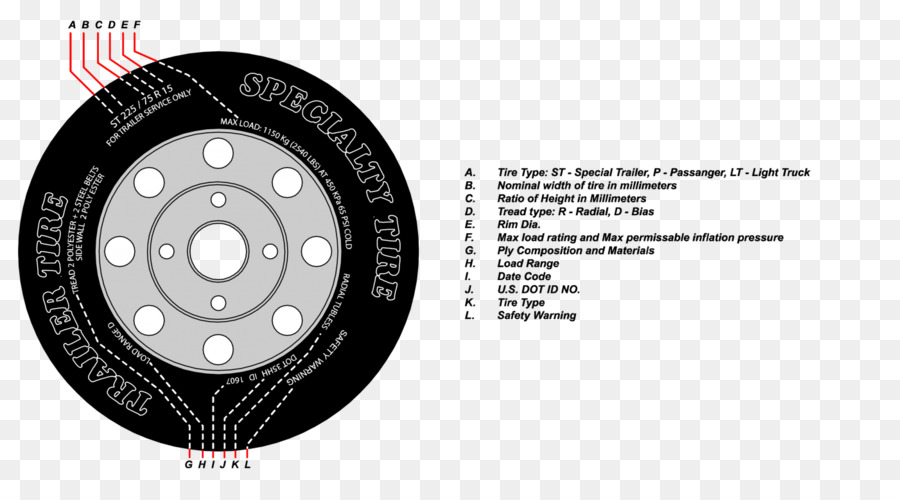 The ratings apply only to the tire itself, and not a particular vehicle. The speed rating does not mean that the vehicle can be safely operated at the tire's rated speed.
The ratings apply only to the tire itself, and not a particular vehicle. The speed rating does not mean that the vehicle can be safely operated at the tire's rated speed.
We recommend driving no more than 60 mph when towing a trailer. Please always drive at a safe speed and abide by the posted speed limit.
Is it a good idea to install tubes in trailer tires?
Carlisle trailer tires are tubeless tires, meaning they don't require a tube. Our recommendation is that tubeless tires be used without tubes. We do not recommend that customers use a tube to "fix" a flat tire. Flat tires should be inspected and repaired (if possible) by a tire dealer.
Tube-type tires.
When using a tube-type tire, be sure to use the proper size tube, the proper flap and an appropriate wheel/valve stem style with a new tire.
I have two brand new Carlisle tires and two that are about 30% tread. Does it matter which tires are on the front or back axle?
Keep the new tires on the same axle and the two worn on the other.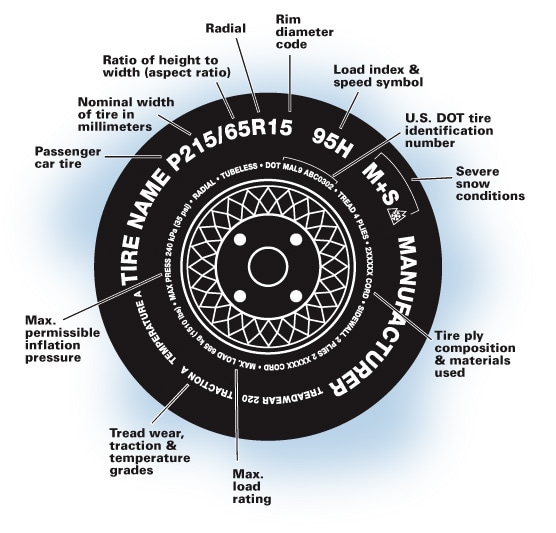 It shouldn't matter if they are positioned in the front or the back. But please keep in mind that tires mounted on the rear axle are likely to wear faster than the tires on the front axle.
It shouldn't matter if they are positioned in the front or the back. But please keep in mind that tires mounted on the rear axle are likely to wear faster than the tires on the front axle.
Where do I register my new tires?
The tire warranty registration form is on-line at: http://register.cimstireregistration.com/index.cfm?id=carlisle
What information do I need to register? For example, my tire side wall reads: TWI AQ12 DOT AQB5 O512
TWI AQ12 DOT AQB5 O512 means:
- TWI: tread wear indicator, which is marked on the upper sidewall
- AQ12: mold number
- DOT: Department Of Transportation
Please register the information following the DOT mark which is "AQB5 0512".
- AQ: Manufacturing plant code
- B5: Manufacturer specific tire size code
- 05: Production week
- 12: Last 2 digits of the year of manufacture (2012)
There is room for 12 digits on the registration form but Carlisle only uses 8 digits.
Carlisle states that your trailer tires exceed DOT requirements.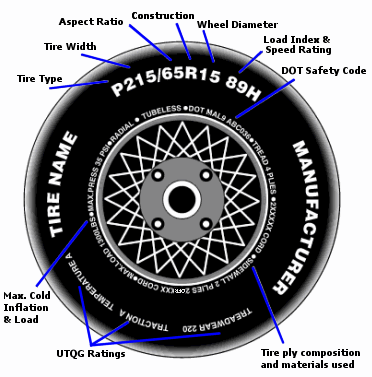 What do you do to exceed DOT requirements?
What do you do to exceed DOT requirements?
Trailer tires are held to the FMVSS119 standard for DOT. The endurance test under this standard is typically either 34 hours or 47 hours depending on the size of the tire. The load during the test varies from 66% up to 114% per the DOT requirement. Carlisle always extends the test after meeting the minimum endurance requirement for passing DOT by increasing the load to 130% and continuing the test. Our standard production checks are set to meet approximately twice the mileage required by DOT on the endurance wheel. We also have development standards that will exceed our standard production checks to insure that our product is robust enough so that we well exceed the DOT requirement at all times.
Should I choose 8 ply over 6 ply tires?
The 8 ply (Load Range D) will carry more load than the 6 ply (Load Range C) so it depends upon the weight of your trailer. Never exceed the maximum load rating stamped on the tire sidewall or the maximum vehicle load rating, whichever is less.
Trailer Tires Side Wall Specifications
The side wall of a trailer tire provides specific information regarding the size and style of the tire. For example, ST175/80D13C means:
- ST - Specialty Tires for trailer use only.
- 175 - The maximum width of the trailer tire is approximately 175 millimeters at its widest point.
- 80 - The height of the sidewall is 80% of the width, in this case 140 millimeters.
- D - (For diagonal) shows that this is a bias tire. The belts on this tire run diagonally from bead to bead or at about 45 degree angles to the center line of the tire. If your tire shows the letter R, your tire is a radial tire. The belts on this tire run radially from bead to bead or at 90 degree angles to the center line of the tire.
- 13 - Indicates this tire fits on a 13 inch diameter wheel.
- C - Is the load range. Typically a "C" load range is equivalent to a 6 ply rated tire, "B" is a 4 ply, "D" is an 8 ply and "E" is a 10 ply rating.
Should trailer tires be rotated?
Trailer tires can be rotated when on a tandem axle to achieve move even wear across the set of tires.
Can trailer tires be plugged and patched?
A dealer may be able to repair a trailer tire with a puncture. Some tires are not repairable based upon the size and location of the puncture.
What is the maximum psi limitation for your trailer wheels?
Max air capacities are typically a function of the tire, not the wheel. Unlike tires, the load rating of a wheel is not generally dependent on the operating pressure. The wheels themselves are manufactured and tested to a load rating (without consideration of pressure) and can safely support that load. As long as the load is within the limits of our wheel's load rating in pounds, our product will perform as expected.
Photo: Shutterstock
adv. rbc.ru
rbc.ru
See also
Numbers and letters on a car tire provide all the necessary information about it. True, it is not easy to read them - here, even in the designation of one parameter, several measurement systems can be used simultaneously. In addition, many values are expressed in special indices. We decipher all important labels for the buyer.
adv.rbc.ru
A tire label is information about its properties printed on the outer rim. This is a huge amount of useful information. Here are the parameters of the tire that can be read from it itself:

The size designation is written in the form XXX/XX R XX. For example 225/65 R17.
The first three digits are the tire width in millimetres. In our case - 225 mm.
The second digit is the height, but not in millimeters, but as a percentage of the width. In our case, its height is 146.25 mm (225 * 0.65).
The third number after R is the outside diameter of the wheel or the inside diameter of the tire in inches. In our case, this is 17 inches or 43.18 cm. Do not confuse - this is the radius, not the diameter. The letter R itself stands for the radial design of the tire, which confuses many. Sometimes Radial can be written separately on the bus - the meaning is the same. In addition to the radial, there is also a diagonal design (D), but these are not found today.
Two numbers and a letter immediately follow the size.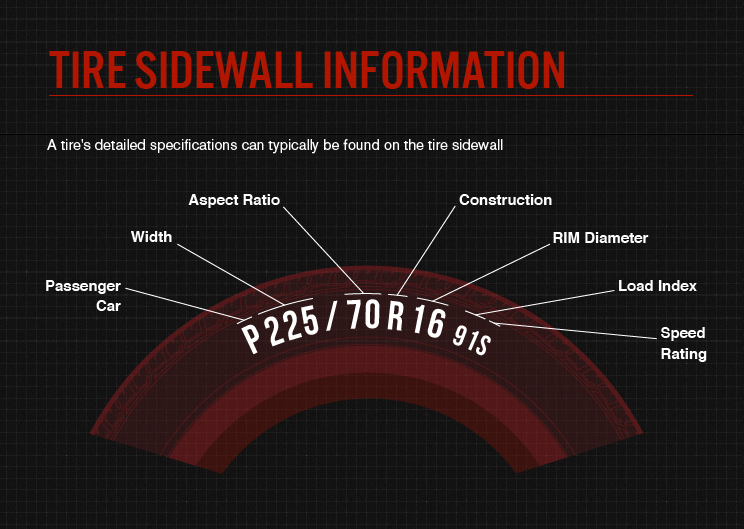 These are the codes for the load capacity and speed limit of the tire.
These are the codes for the load capacity and speed limit of the tire.
Two digits - capacity or load index. This is a complex system of values, in which the larger the number, the greater the load, but the step size between the values is not constant. Therefore, it is easier to just know the most common of them:
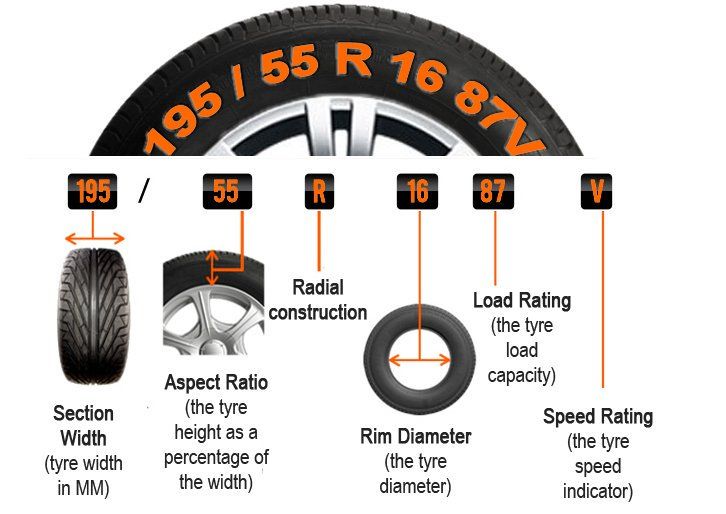
The index value is the load on each wheel separately. To calculate the total load capacity, multiply by 4. This value can also be written elsewhere in a simpler form: Max load - xxx kg.
Photo: Shutterstock
The letter after the two digits of the load index is the index of the maximum speed for which the tire is designed. It starts with A, but the values relevant for modern machines start with the second half of the Latin alphabet:
This is not the limit, but the maximum "comfortable" value. In exceptional cases, you can even exceed it by 20-30%, but it is better to avoid this.
Another key parameter is the timing of the tire. Usually it is indicated in a rounded rectangle, but may be without a frame. The first two digits are the week, and the second two are the year.
Also, three more parameters are usually indicated on the tire - wear resistance margin, grip quality class and temperature index.
The wear index is denoted by the word treadwear. Its unit is 480 km. Multiply the number next to that word by that value. If treadwear is 400, it means that under test conditions at the test site, such a tire has worn out after driving 192,000 km. Also, this parameter can be designated separately as the abbreviation TWI.
Traction is a measure of how well a tire grips on wet road surfaces. It has values from AA - the best level, to CC - the worst. Tires for regular passenger cars usually have class A, and the highest class is for sports and racing.
Temperature is the tire's ability to withstand heat when driving at a certain speed. There are three values here:
There are three values here:
Tires of modern passenger cars most often have this index value - A.
Photo: Shutterstock
The letter E with a number indicates that the tire complies with the rules of the European Tire Standards Association (ETRTO) and has a corresponding certificate . The number indicates the country that issued it - but this does not matter, since the ETRTO requirements are the same. In this case, the tire can be produced anywhere.
The weather conditions in which it is permissible to use this tire are also usually indicated:

Winter tires must have a first, second or third designation.
On some tires you can find the designation of the type of car for which they are intended:
In addition, the tire may be marked with:
 Tubeless may also be written on a tubeless tire;
Tubeless may also be written on a tubeless tire; For many motorists, the tire parameters indicated on the sidewalls are akin to the Stirlitz code in the Center - nothing is clear. But for the correct selection of wheels, you need to be able to read these designations and understand their meaning. Tire manufacturers' catalogs and online selections make life easier, but they are not without errors and do not contain all the information. To understand the automotive "shoes" and choose tires yourself, you will have to decipher their markings.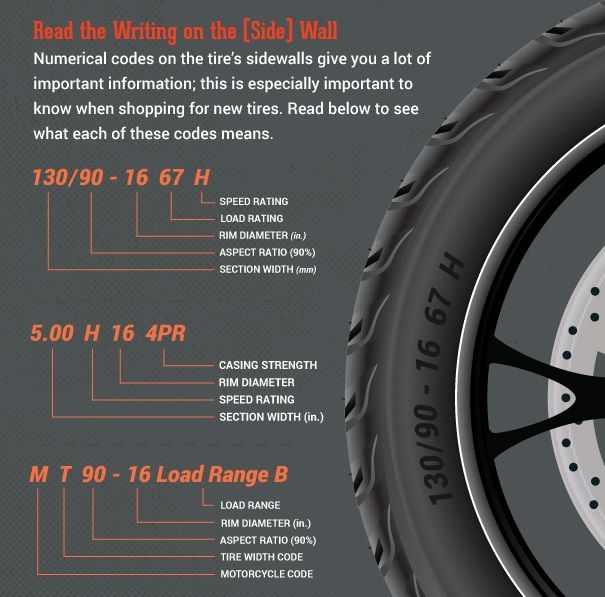 Our cheat sheet is here to help.
Our cheat sheet is here to help.
Tire size code
As with choosing your own boots, the first step in choosing your tires is size. But if we know the exact size of the foot, then there may be several tire sizes recommended by the manufacturer. You can find them in the car manual or on the tire pressure sticker on the door pillar, in the Tire Size column.
The format XXX / YY RZZ, familiar to most drivers and the most common in the world (where XXX is the tire width, YY is the profile height, ZZ is the rim diameter) is called European or metric , although it is only partly so. Let's analyze the metric format using the example of the dimension 185/65 R15 .
185 - The first digit of the dimension is the width of the tire in millimeters.
65 - the second digit indicates the profile height tires as a percentage of width. In our example, 65% of 185mm is 120mm. The profile height in percent is another surprise for novice motorists: after buying non-standard tires, you can suddenly find out that the dimension 195/65 R15 is not only wider than the standard 185/65 R15, but also higher. After all, 65% of 195 mm is no longer 120 mm, but almost 127! Although formally the profile of both tires is the same, the 65th.
If the profile height is 80–82% of the width, then it is often not indicated in the dimensions, marking the tire in the format XXX RZZ, without a fraction (for example, 185 R15). These tires are called full profile . Usually they are used on light trucks and vans when driving on bad roads at low speeds. Learn more about the effect of profile height on handling.
Diagonal full profile stowage T 135/80 D17.
R - the letter familiar to drivers in the dimension of the wheel does not mean the radius, as many people think, but radial (Radial) tire carcass design. Such wheels are now the majority, but there are also tires of a diagonal (Diagonal) design - for low-speed special equipment and heavy trucks. Often, spare wheels-stowaways of passenger cars are diagonal. Bias tires are marked with the letter D instead of R (for example, 135/80 D17) - you can’t drive fast on such tires.
Such wheels are now the majority, but there are also tires of a diagonal (Diagonal) design - for low-speed special equipment and heavy trucks. Often, spare wheels-stowaways of passenger cars are diagonal. Bias tires are marked with the letter D instead of R (for example, 135/80 D17) - you can’t drive fast on such tires.
15 - the last digit in the dimension indicates the bore diameter of the tire in inches (yes, inches in metric format). Of course, it must correspond to the diameter of the disk on which the tire is installed: putting R15 tires on the 16th “casting” will not work.
Inch tire size
There is another, less common size standard - the American or inch format is found on tires for SUVs. It looks like XX×YY RZZ, where XX is the full diameter of the tire, YY is the width of the tire, and ZZ is the diameter of the rim (all in inches).
The American format is simpler and more logical than the European one, although it is unusual for us. There are no percentages in it and the height (full diameter) of the entire wheel is immediately visible, while in the European format it must be calculated separately. For example, a 31×10.50 R15 tire is 31 inches high, 10.5 inches wide, and has a 15″ bore. For comparison, to find out the height of a tire in European dimension format, you first need to calculate the profile (taking a percentage of the width), multiply by two and add the diameter of the wheel, remembering to convert it from inches to millimeters. It is impossible to do all this in the mind.
There are no percentages in it and the height (full diameter) of the entire wheel is immediately visible, while in the European format it must be calculated separately. For example, a 31×10.50 R15 tire is 31 inches high, 10.5 inches wide, and has a 15″ bore. For comparison, to find out the height of a tire in European dimension format, you first need to calculate the profile (taking a percentage of the width), multiply by two and add the diameter of the wheel, remembering to convert it from inches to millimeters. It is impossible to do all this in the mind.
35×12.50 R18 LT off-road tire.
To convert dimensions from one format to another, a tire calculator is usually used. There are dozens of them on the Internet, but some contain errors. Before using the tire calculator, it is better to recalculate a couple of dimensions manually and compare the results. For reference: 1 inch is 25.4 millimeters.
Tire codes
In addition to the numbers, in the tire dimension you can find not only the familiar letter R, but also other symbols, which, as a rule, speak about the purpose of the tire. In the table, we have collected the most common options for additional letter designations for car tires.
In the table, we have collected the most common options for additional letter designations for car tires.
| Tire codes | |||||
|---|---|---|---|---|---|
| Symbol | Examples | Description | Symbol | Examples | Description |
| LT | 185/65 R15 LT | Light Truck, tire for light trucks and SUVs. | T | T 185/65 D15 | Temporary, temporary spare tire. |
| P | P 185/65 R15 | Passenger, passenger car tyre. | XL | 185/65 R15XL | Extra Load, reinforced tire with increased load capacity. |
| C | 185/65 R15 C | Commercial or Cargo, truck and van tire. | RF | 185/65 R15 RF | Reinforced, reinforced tire with extra plies. |
| ST | ST 185/65 R15 | Special Trailer, tire for trailers and trailers. | ZR | 185/65 ZR15 | High speed tire for speeds over 240 km/h. |
Load and speed indices
Following the dimension on the sidewall of the tire, the permissible load and speed are indicated - of course, also in the form of "encryption", and not specific values. The load (carrying capacity) of the tire is indicated by a numerical index, and the speed is indicated by an alphabetic index. You can translate them into understandable indicators using special tables.
The load (carrying capacity) of the tire is indicated by a numerical index, and the speed is indicated by an alphabetic index. You can translate them into understandable indicators using special tables.
Ultimate load and speed are important parameters that affect both the safety and durability of rubber. Automakers prescribe the installation of certain tires based on the mass of the car, and the indices may be different depending on the dimension. Never set tires with a load capacity or speed below the recommended values!
| Tire load indexes | |||||||
| Index | Load | Index | Load | Index | Load | Index | Load |
| 63 | 272 kg | 80 | 450 kg | 97 | 730 kg | 114 | 1180 kg |
| 64 | 280 kg | 81 | 462 kg | 98 | 750 kg | 115 | 1215 kg |
| 65 | 290 kg | 82 | 475 kg | 99 | 775 kg | 116 | 1250 kg |
| 66 | 300 kg | 83 | 487 kg | 100 | 800 kg | 117 | 1285 kg |
| 67 | 307 kg | 84 | 500 kg | 101 | 825 kg | 118 | 1320 kg |
| 68 | 315 kg | 85 | 515 kg | 102 | 850 kg | 119 | 1360 kg |
| 69 | 325 kg | 86 | 530 kg | 103 | 875 kg | 120 | 1400 kg |
| 70 | 335 kg | 87 | 545 kg | 104 | 900 kg | 121 | 1450 kg |
| 71 | 345 kg | 88 | 560 kg | 105 | 925 kg | 122 | 1500 kg |
| 72 | 355 kg | 89 | 580 kg | 106 | 950 kg | 123 | 1550 kg |
| 73 | 365 kg | 90 | 600 kg | 107 | 975 kg | 124 | 1600 kg |
| 74 | 375 kg | 91 | 615 kg | 108 | 1000 kg | 125 | 1650 kg |
| 75 | 387 kg | 92 | 630 kg | 109 | 1030 kg | 126 | 1700 kg |
| 76 | 400 kg | 93 | 650 kg | 110 | 1060 kg | 127 | 1750 kg |
| 77 | 412 kg | 94 | 670 kg | 111 | 1090 kg | 128 | 1800 kg |
| 78 | 425 kg | 95 | 690 kg | 112 | 1120 kg | 129 | 1850 kg |
| 79 | 437 kg | 96 | 710 kg | 113 | 1150 kg | 130 | 1900 kg |
| Subcompacts, cars | Crossovers, SUVs | ||||||
| Tire speed indices | ||||||||||||
| Index | M | N | P | Q | R | S | T | U | H | V | W | Y |
| Speed, km/h | 130 | 140 | 150 | 160 | 170 | 180 | 190 | 200 | 210 | 240 | 270 | 300 |
The load and speed indices can indirectly judge the strength of the tire, because high loads require a reinforced carcass and a harder rubber compound.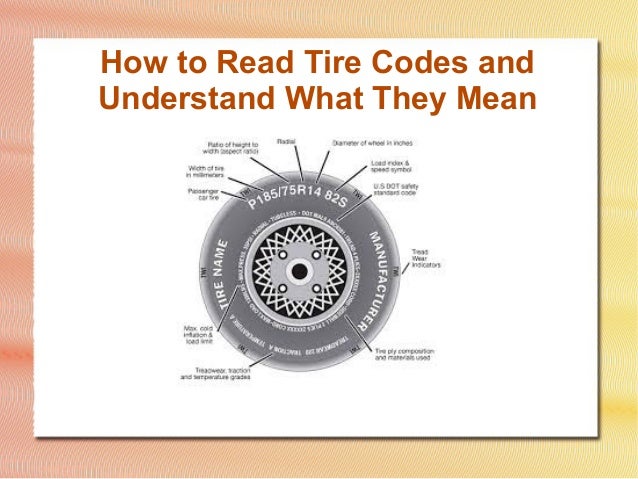
A reasonable question arises: is it worth putting tires with a higher maximum load or speed than the manufacturer recommends - so to speak, with a margin? For what purpose. If you often drive on bad roads, then tires with a high load index have a better chance of surviving the daily battle with pits than stock tires. But better handling or more efficient braking due to a high speed index cannot be achieved - they are not connected in any way. But the comfort and smoothness of the ride on stiffer high-speed tires will suffer significantly. If you drive around the city in civilian modes, then there is no point in buying high-speed tires with a truck load capacity - just stick to the recommended values.
Tire release date
As with most products, car tires are marked with the release date. Motorists often forget this when choosing wheels, although the age of the rubber is one of the key factors. Over the years, rubber dries out, losing elasticity, and outwardly this may not manifest itself in any way. After only 5 years of storage in a warehouse, a tire that has not even been ridden no longer fully corresponds to the parameters declared once. Therefore, the date of manufacture of the tire should be looked first of all - the fresher, the better.
After only 5 years of storage in a warehouse, a tire that has not even been ridden no longer fully corresponds to the parameters declared once. Therefore, the date of manufacture of the tire should be looked first of all - the fresher, the better.
The date of manufacture is printed on the sidewall of the tire in a separate oval box. Until 2000, a three-character code was used, but now these "walking dead" are no longer to be found. Since 2000, manufacturers have been marking tires with a four-digit code. The first two digits are the week of manufacture, the last two are the year. For example, a tire marked 1411 was produced in week 14 (i.e. April) of 2011 and is no longer worth driving today.
Tread wear indicators
All tires have TWI (Tread Wear Indicator) wear indicators - special jumpers in the tread grooves. To facilitate their search, symbols are applied to the sidewall of the tire indicating the location of the indicators: small triangles or arrows, sometimes with the inscription TWI, sometimes without.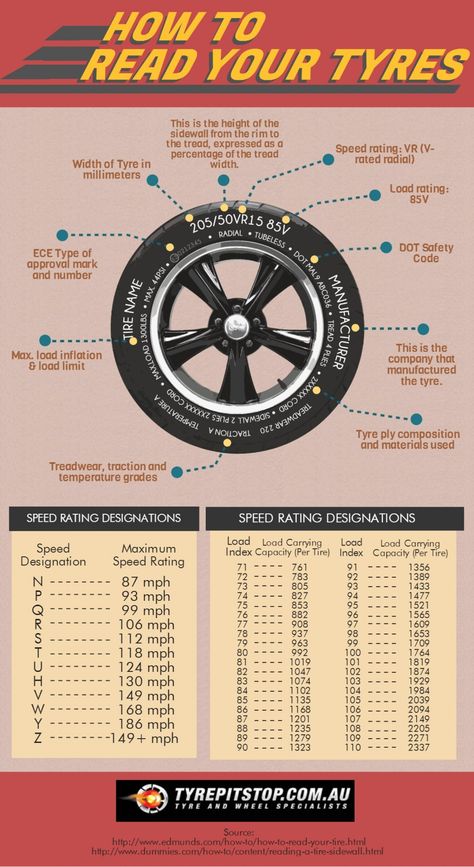
Keep in mind that the TWI indicator shows critical tread wear, not "50% wear" as used tire salesmen like to say. Once the rubber has worn down to the indicator, it's time to buy new tires. On winter tires, the indicators are located higher than on summer tires, since their allowable wear is noticeably less.
Run Flat Tires
Some tires have additional features, such as Run Flat technology, which allows you to run on flat tires. Reinforced sidewalls prevent the disc from damaging the tire: you can drive 100 km on the “rims” – it’s enough for a tire fitting. For many modern cars that do not have a spare tire, Run Flat tires are standard equipment.
The designation of Run Flat tires varies from manufacturer to manufacturer. Some brands label their tires RFT (Run Flat Tires), others ROF (Run On Flat), others just RF. More to come: RSC, ZP, ZPS, DSST, SSR, HRS, XRP, TRF, PAX, MOE, AOE are all run flat tire options. "Please, slow down, I'm recording!" By the way, there is an international symbol Run Flat, similar to a crawling snail, but almost none of the manufacturers use it.
Tire mounting symbols
But not everything with tires is so complicated and confusing. For example, rubber with a directional or asymmetric tread pattern must have symbols for proper installation. This is a service label for tire shop employees - people who work with tires on a daily basis. And here it is generally accepted and intuitive!
The directional tire, in addition to the tread pattern directed forward, is issued by the inscription Rotation (rotation) on the sidewall and an arrow pointer. It indicates in which direction the wheel should rotate when the car moves forward. And on tires with an asymmetric tread there are inscriptions Outside (outer side) and Inside (inner side) - this is how you need to put rubber on the disc. As you can see, it's hard to go wrong.
However, nothing is impossible for roadside tire shops, and incorrectly fitted tires are sometimes found. A counter-rotating wheel loses efficiency and introduces an imbalance in the behavior of the machine.